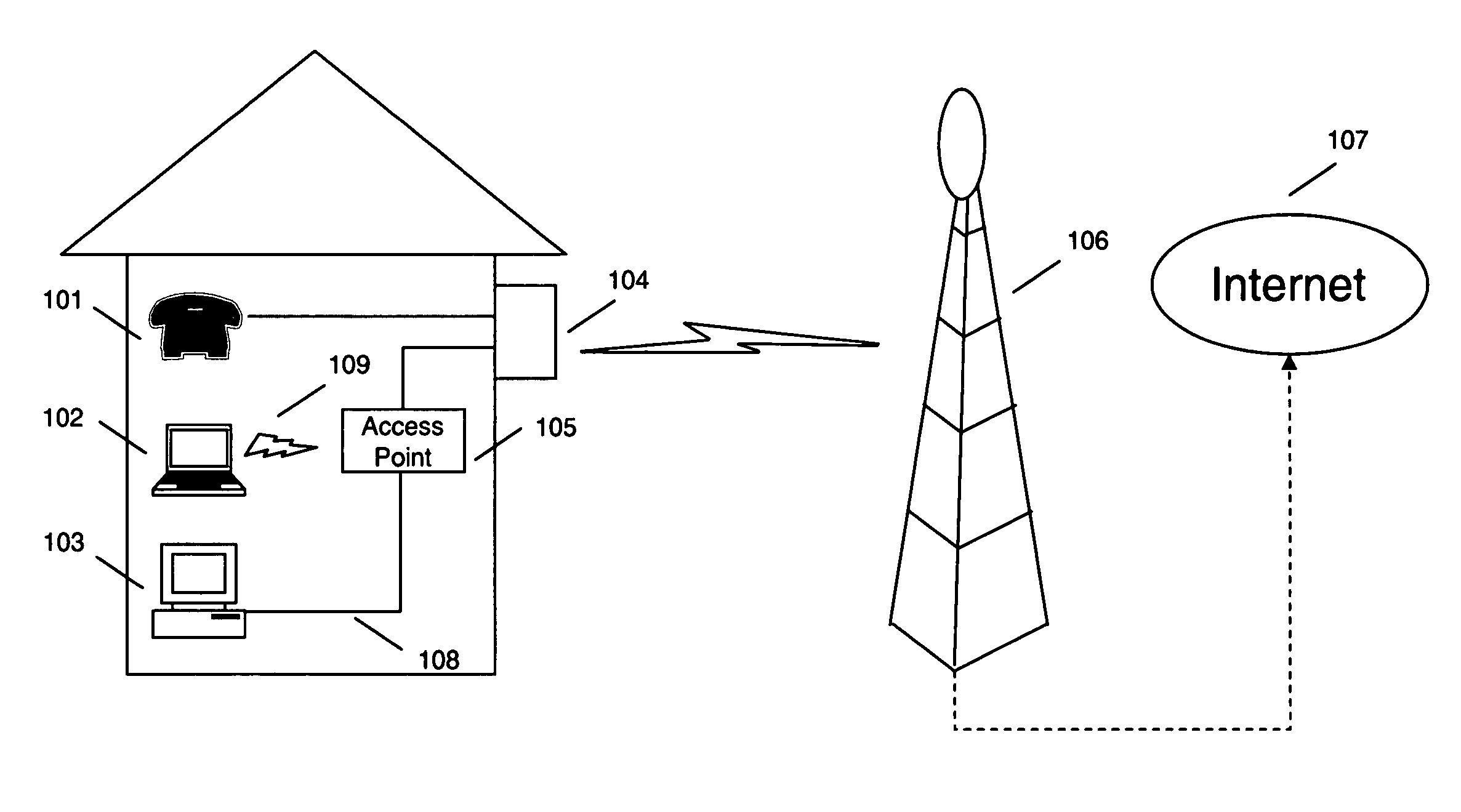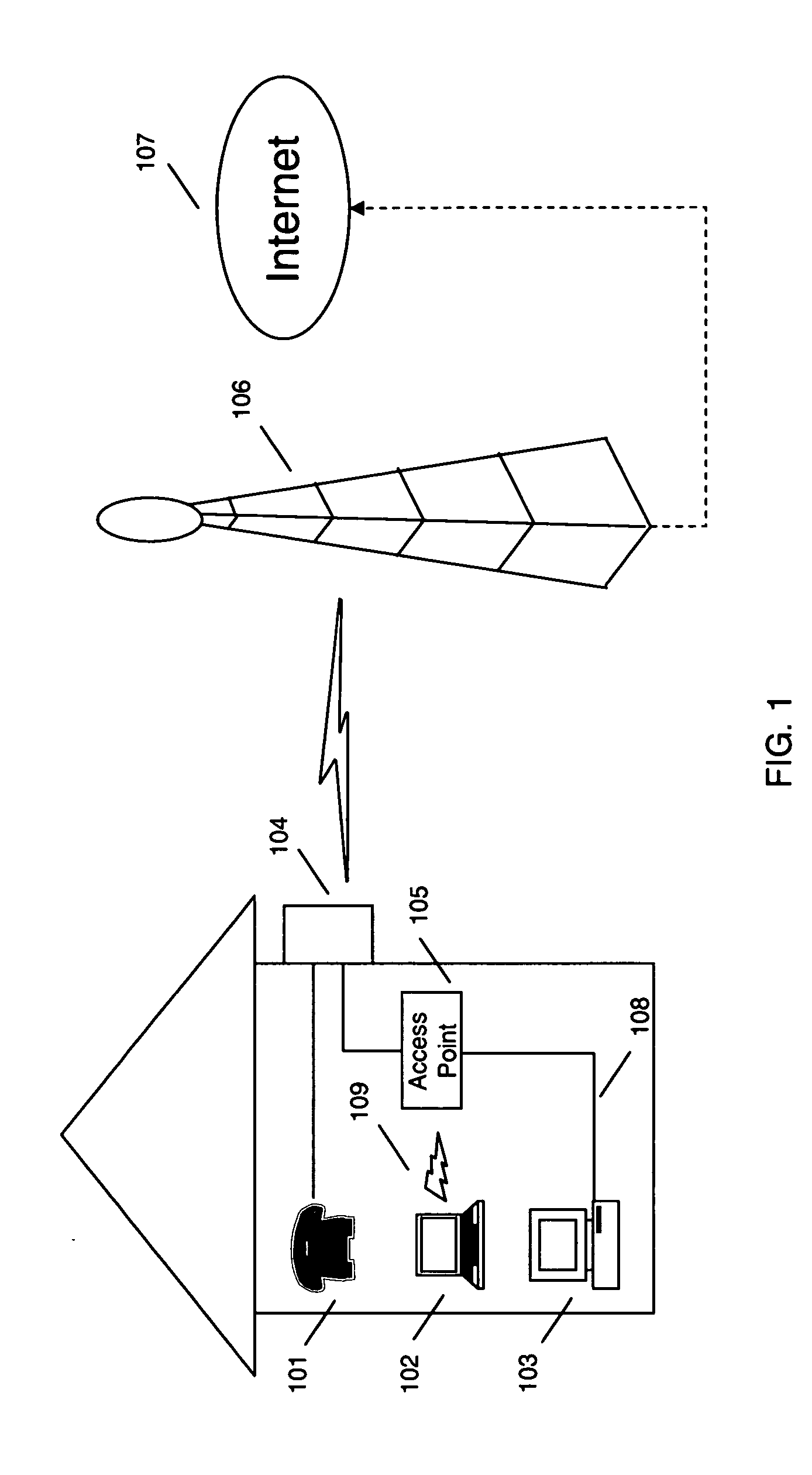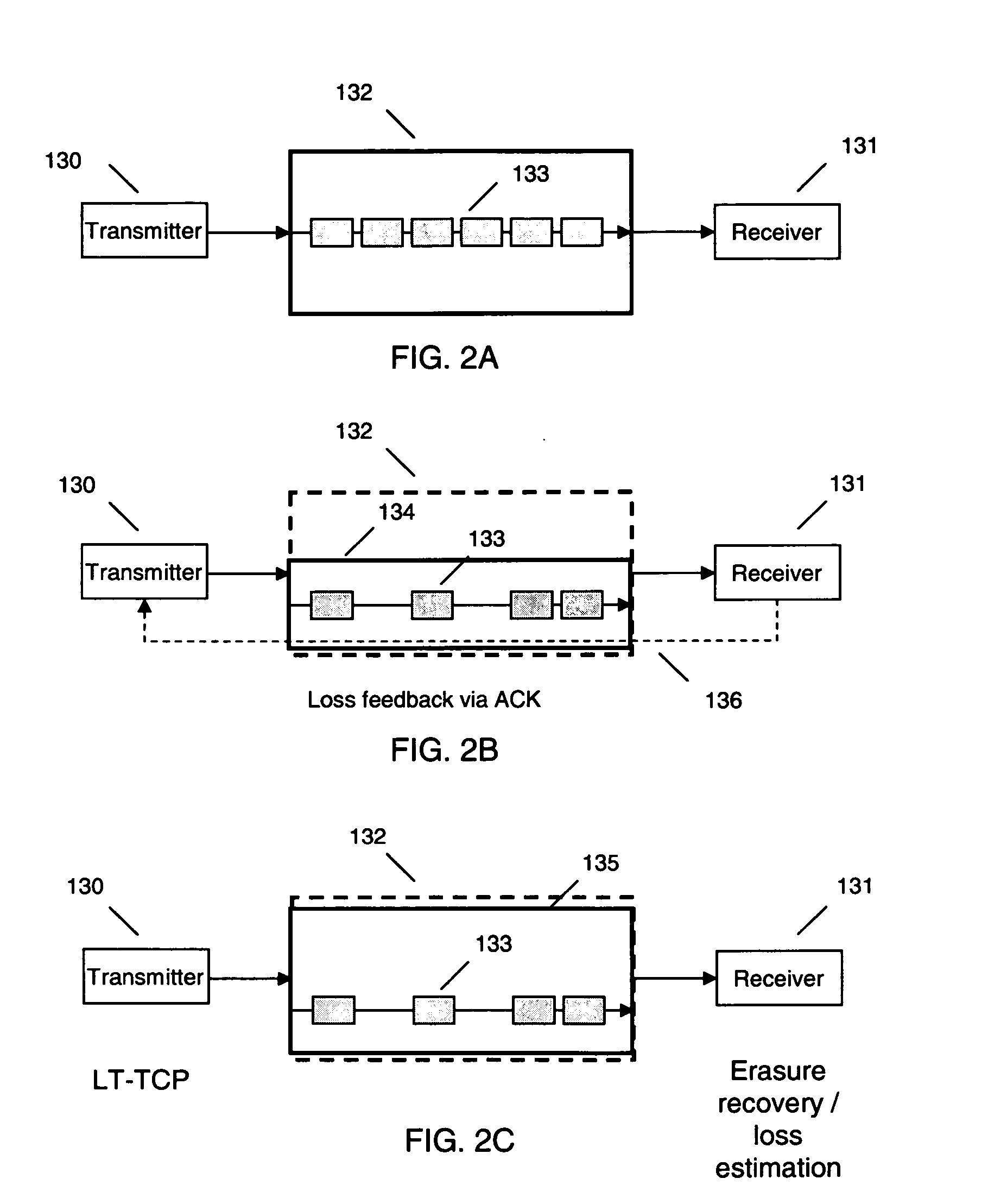Loss tolerant transmission control protocol
a transmission control and loss-tolerant technology, applied in the field of communication networks, can solve the problems of loss of transmission data, data loss during transmission, impaired transmission of communication data, etc., and achieve the effect of reducing congestion window and reducing the size of the window in bytes
- Summary
- Abstract
- Description
- Claims
- Application Information
AI Technical Summary
Benefits of technology
Problems solved by technology
Method used
Image
Examples
Embodiment Construction
[0036] In the following description of the various embodiments, reference is made to the accompanying drawings, which form a part hereof, and in which is shown by way of illustration various embodiments in which the invention may be practiced. It is to be understood that other embodiments may be utilized and structural and functional modifications may be made without departing from the scope and spirit of the present invention.
[0037]FIG. 1 illustrates an example of a communication system in which the present invention may be implemented. In this example, data may be communicated over wireless channels. For example, data may be transmitted from a user device such as a telephone 101, a laptop computer 102, a desktop computer 103, or any other device capable of transmitting data. In one example, devices at a customer premise such as a home, business or hotspot, may communicate data via an internal access point 105. In the example illustrated, a laptop computer 102 communicates via a w...
PUM
 Login to View More
Login to View More Abstract
Description
Claims
Application Information
 Login to View More
Login to View More - R&D
- Intellectual Property
- Life Sciences
- Materials
- Tech Scout
- Unparalleled Data Quality
- Higher Quality Content
- 60% Fewer Hallucinations
Browse by: Latest US Patents, China's latest patents, Technical Efficacy Thesaurus, Application Domain, Technology Topic, Popular Technical Reports.
© 2025 PatSnap. All rights reserved.Legal|Privacy policy|Modern Slavery Act Transparency Statement|Sitemap|About US| Contact US: help@patsnap.com



